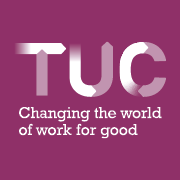The Women's Trade Union League, founded in 1874 and known until 1890 as the Women's Protective and Provident League, was a British organisation promoting trade union for women workers. It was established by Emma Paterson, who had seen unions managed by working women in America. [1]
The league's principal founder was Emma Paterson. A member of the Working Men's Club and Institute Union, she persuaded many of that organisation's patrons to serve in the same role for the new league. In 1872, she became secretary of the Society for the Promotion of Women's Suffrage Association, and although she was soon dismissed, these two roles gave her a keen interest in women's trade unionism. She visited the United States in 1873, and there studied the Women's Typographical Society and Female Umbrella Makers' Union. On her return to England, she wrote and article for Labour News , calling for an association of women trade unionists. [2]
In July 1874, a conference was called to discuss Paterson's proposal. Chaired by Hodgson Pratt, it agreed to establish the "Women's Protective and Provident League", not as a trade union federation, but as an organisation which promoted women's trade unionism. Initially, it had four objects: protecting wages and conditions of workers, providing benefits for sick and unemployed workers, serving as an employment bureau, and promoting arbitration in the case of disputes between workers and employers. An executive committee was also elected. Paterson still wanted to form a trade union for women, and this occurred later in the year, when she set up the National Association of Working Women. [2]
The WPPL facilitated the creation of several women's unions, including the Society of Women Employed in Bookbinding, the Society of London Sewing Machinists, the Society of Upholsteresses, the Dewsbury, Batley and Surrounding District Heavy Woollen Weavers' Association, Leeds Spinners' Women's Association and the Benefit Society for Glasgow Working Women. The Dewsbury, Batley and Surrounding District Heavy Woollen Weavers' Association was led by Ann Ellis and when the league offered help for their weaver's strike in 1875, Ellis decided that they would be self-reliant. [3] Many soon collapsed, but the bookbinders thrived, and the upholsteresses survived, bringing Jeannette Wilkinson into the organisation. The league also established the Women's Halfpenny Bank in 1879, providing loans to members, in addition to a reading room, library and employment register, a swimming club and trips to Epping Forest. [2]
In 1875, Paterson and Edith Simcox became the first women delegates to the Trades Union Congress. At this and subsequent conferences, WPPL representatives promoted women's rights, arguing against barriers to women's employment. Elsewhere, the league opposed Thomas Burt and Henry Broadhurst's efforts to stop women from working at coal mines, aligning with the Personal Rights Association and the Liberty and Property Defence League in order to do so. From 1876, the union published a monthly journal, the Women's Union Journal. However, this consumed nearly half its funds, and it struggled to survive. In 1879, it faced a £90 debt, but most was covered by a collection organised by Stopford Brooke from his congregation. [2]
Paterson died in 1886, and the league was thereafter led by Emilia Dilke, who also contributed about £100 a year from her personal funds. [2] The league came to focus on promoting legislation to improve the rights of working women, and on persuading all-male trade unions to begin admitting women. In 1895, member Amy Hurlston gave evidence to the Royal Commission on the Aged Poor. [4]
Mona Wilson became general secretary in 1899, and was succeeded in 1903 by Mary Macarthur. Macarthur's leadership rejuvenated the league, and by 1905 its membership had risen to 70,000, including 16,000 men. [5] Macarthur founded the Union of Jute, Flax and Kindred Textile Operatives in 1906, to improve the position of women workers in the city, and the difficulties of supporting the union led her to found the National Federation of Women Workers (NFWW), with a constitution stating that three members of the league would serve on the federation's executive. The federation took on much of the direct organising work previously covered by the league. [5]
The league took an interest in working conditions for children. It formed a committee to look at the role of wage earning children and to advise on reform. Members included feminist Jane Brownlow, socialist Margaret Macdonald and Ruth Homan. [6]
In 1915, the league launched a campaign to get women undertaking war work, particularly in munitions factories, to join trade unions. The following year, it worked with the NFWW, Women's Co-operative Guild, Women's Labour League and the Railway Women's Guild to establish the Standing Joint Committee of Industrial Women's Organisations, to advocate for the representation of working women on government bodies. [5]
Macarthur attended the Women's International Labour Conference in 1919, and also the founding conference of the International Labour Organization, as an adviser to G. H. Stuart-Bunning. These conferences inspired her to merge the women's trade union organisations into their counterparts, and this was achieved in 1921, when the Women's Trade Union League became the Women's Section of the Trades Union Congress (TUC), with two women's places on General Council of the TUC. [5]

The Scottish Trades Union Congress (STUC) is the national trade union centre in Scotland. With 40 affiliated unions as of 2020, the STUC represents over 540,000 trade unionists.

Margaret Grace Bondfield was a British Labour Party politician, trade unionist and women's rights activist. She became the first female cabinet minister, and the first woman to be a privy counsellor in the UK, when she was appointed Minister of Labour in the Labour government of 1929–31. She had earlier become the first woman to chair the General Council of the Trades Union Congress (TUC).
Emma Anne Paterson was an English feminist and trade unionist.

Gertrude Mary Tuckwell was an English trade unionist, social worker, author, and magistrate.

Emilia Francis Strong, better known as Emilia, Lady Dilke, was a British author, art historian, feminist and trade unionist.

Mary Reid Anderson was a Scottish suffragist and was a leading trades unionist. She was the general secretary of the Women's Trade Union League and was involved in the formation of the National Federation of Women Workers and National Anti-Sweating League.

Sir Ben Turner CBE was an English trade unionist and Labour Party Member of Parliament (MP) for Batley and Morley from 1922 to 1924 and from 1929 to 1931.

The Cradley Heath Workers' Institute was built between 1911 and 1912 in Lomey Town, Cradley Heath, West Midlands, England. It was built as a social centre for the people of Cradley Heath and surrounding areas within the Black Country, intended to become a venue for educational meetings and lectures. It also housed Union offices, where members could come to seek guidance, and from which the Contributory Unemployment Fund would be distributed. In 2006 the building was threatened by a bypass and so was moved to the Black Country Living Museum in a collaborative project including Sandwell MBC, Midlands TUC and funded by the community and the Heritage Lottery Fund.

The Trades Union Congress (TUC) is a national trade union centre, a federation of trade unions that collectively represent most unionised workers in England and Wales. There are 48 affiliated unions with a total of about 5.5 million members. Paul Nowak is the TUC's current General Secretary, serving from January 2023.

Julia Varley, OBE was an English trade unionist and suffragette.

David Holmes was a British trade unionist.

Harriet Fisher Mole, known as Jeannie, was a British socialist, feminist, and trade union organiser in Liverpool. Arriving there in 1879, Mole was instrumental in bringing socialism to Liverpool, as well as setting up a number of societies to encourage trade unions amongst Liverpool's female workforce. She supported strikes to improve the workforce's conditions, especially to remove fines.
The History of trade unions in the United Kingdom covers British trade union organisation, activity, ideas, politics, and impact, from the early 19th century to the recent past. For current status see Trade unions in the United Kingdom.
Sarah Dickenson OBE was a British trade unionist and feminist activist.
Ellen Cecelia McCullough was a British trade unionist.

The National Federation of Women Workers (NFWW) was a trade union in the United Kingdom of Great Britain and Ireland active in the first part of the 20th century. Instrumental in winning women workers the right to a minimum wage for the first time, the NFWW broke down barriers for women's membership in trade unions in general.
Nancy Adam was a Scottish trade union official who served as the first woman officer of the Trades Union Congress (TUC).

Helen Fairhurst was initially a textile worker who became a trade unionist, suffragette and president of the Wigan and District Weavers, Winders, Reelers and Beamers Association, a virtually all-women trade union. She fought to introduce suffrage amendments to the TUC and campaigned for the NUWSS. She was part of a group of female campaigners known as "radical suffragists" which also included Sarah Reddish, Ada Nield Chew and Selina Cooper.
Dorothy Mary Elliott was a leading British feminist and trade unionist. She was Chairman (sic) of the National Institute of Home Workers until 1959.

Ann Ellis born Ann Waite was an English power loom weaver and a trade union leader. She became the main person in a new textile union that led a successful three-month strike that was notably led by women in 1875.